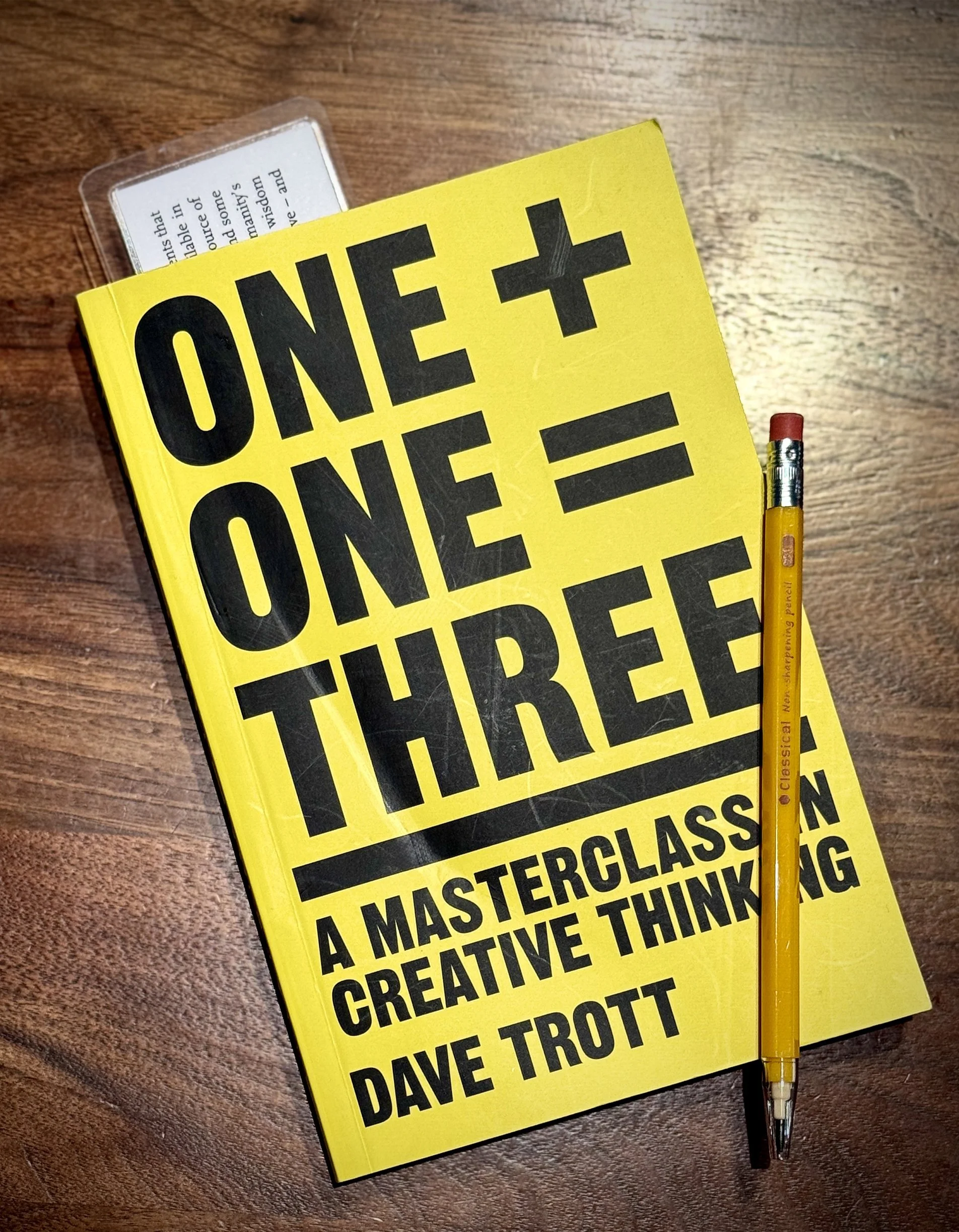Human Creativity
Creativity is often at the heart of many of our best work but we often take it for granted. We often forget that creativity is a skill and way of being that can be developed. When we regularly grow and exercise our creative instincts, our ability to innovate will be readily available when we need it. I invite you to make the effort to deliberately nurture your creative instincts.
Creativity and Innovation
Creativity is the ability to come up with new ideas, and innovation is the process of implementing those ideas to create real-world results. Without creativity, there would be no new ideas to innovate upon, and without innovation, creative ideas would remain as mere concepts without practical application.
Think Like a Designer
“True innovation is not a ‘best practice.’ If you want to innovate, you have to design. Design and design thinking, as opposed to business thinking, is the core process that must be mastered to build a culture of non-stop innovation."
- Marty Neumeier
To solve big challenges, creative mindsets are vitally important. A well-established “best practice” by definition is not innovation. Organizations need leaders who can shake up the status quo in a way that moves the mission forward. People who can make new connections, source inspiration from unlikely places, and come up with original thinking.
Design thinking is a problem-solving approach focused on understanding the needs of users, fostering creativity, and iterating toward effective solutions. Originating in the design world, it has been widely adopted across industries for its human-centred approach to innovation.
Five steps for thinking like a designer:
Empathy: Deeply understanding the needs, desires, and challenges of the people being designing for.
Define: Clearly articulating the problem based on insights gathered during the empathy step.
Ideate: Generating a wide range of creative ideas to solve the defined problem.
Prototype: Building simple, low-cost versions of potential solutions to test and explore ideas.
Refine: Gathering feedback from users on prototypes to refine and improve the solutions.
Creative Decision-Making
“As a senior executive, what do you really get paid to do? You get paid to make a small number of high-quality decisions.”
- Jeff Bezos
You can build your creative decision-making abilities by combining knowledge, emotional intelligence, and a strong work ethic.
Study Creativity:
Learn how creative professionals such as designers, film makers, and novelists get their inspirations. Learn their techniques and processes for coming up with creative ideas.
Exposed yourself to a wide range of cultures and domains of expertise. My thoughts on knowledge-building -> here
Engage in a hobby that intrigues you, one that demands a high level of creativity. This can develop transferable creative instincts, useful skills, and problem solving abilities. For a deeper dive on this, visit my artistic pursuits website -> here
Hone Emotional Intelligence:
Get better at taking calculated risks by increasing awareness of your irrational fears. Our sense of fear of failure, for example, can often interfere with our good judgment. Mitigate this by increasing self-awareness and honing the ability to step into action despite your fears trying to hold you back. This is a skill that can be developed.
Do Your Reps:
Regularly practice seeing situations from multiple perspectives - especially when there only seems to be one “truth” of the situation.
Routinely challenge yourself to generate counterintuitive ideas and conclusions.
Study and practice using a variety of mental models for problem-solving and idea generation.
Cultivate your curiosity by exercising it in everything you do, especially when interacting with people.
Read books on creativity.
A section from One + One = Three by Dave Trott
Creativity is a Way of Being
“The object isn’t to make art, it’s to be in that wonderful state, which makes art inevitable.”
- Robert Henri
Whether our “art” is leading people, solving problems, making decisions, or all of the above - the ease with which we make quality outputs starts with how we are being.
Becoming creative isn’t just about learning techniques and ideas. It’s also about being able to tap into our intuitive inspiration. Have you ever unexpectedly come up the answer to an elusive problem when not trying to think of it - such as when taking a shower, while out for a walk, or just as you wake up in the morning? We have states of being that lead to easier access to our wisdom, creativity, and resourcefulness. We can learn to reliably tap into these states deliberately.
Some ideas for making your art inevitable:
Develop deep self-awareness through mindfulness training.
Learn to regulate negative emotions.
Learn to notice and let go of negative rumination (details).
Build the mind-body connection (details) to enhance access to personal wisdom.
Make space and time for contemplation, so your below-the-surface ideas have an opportunity to come up.
Try different techniques for relaxing into the body (i.e., get out of your head). This gives voice to your wisdom by allowing your deeper ideas to rise to your consciousness.
Recommendations
Photo: Mike Blabac
If you’re interested in deepening your understanding of the principles above, here are some books I recommend:
The Creative Act: A Way of Being, by Rick Rubin
The Medici Effect, by Frans Johannson
Novelist as a Vocation, by Haruki Murakami
The Innovator’s Dilemma, by Clayton M. Christensen
Creative Blindness, by Dave Trott
One + One = Three, by Dave Trott
Creative Confidence, by Tom and David Kelley
The Great Mental Models series, by Shane Parrish
Peak Mind: Find Your Focus, Own Your Attention, by Amishi Jha
The Rise of Superman: Decoding the Science of Ultimate Human Performance, by Stephen Kotler
Stealing Fire: How Silicon Valley, the Navy SEALs, and Maverick Scientists Are Revolutionizing the Way We Live and Work, by Steven Kotler and Jamie Wheal
To discuss exploring this topic in a coaching/consulting context, you can reach me via the button below.




